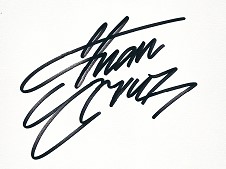What are some common mistakes to avoid in laser wood engraving?
As an experienced woodworker with a wide range of knowledge, I recently purchased a laser head from Opt Lasers (website: optlasers.com). I must say, their laser head is impressive and I appreciate the competition and traditional methods of wood processing. However, I also see the potential for laser technology in the future, and I believe that laser heads will become a staple tool in workshops.
Laser engraving on wood has gained popularity in recent years due to its high precision and efficiency compared to traditional engraving methods. However, there are still some common mistakes that many woodworkers make when using laser technology. In this article, I will share some of these mistakes and how to avoid them to achieve the best results in laser wood engraving.
1. Improper Material Selection
The type of wood used for laser engraving can greatly affect the final outcome of your design. Some types of wood, such as cherry, birch, and maple, are ideal for laser engraving due to their consistent and fine grain. On the other hand, woods with large grains, like oak and pine, can result in a less defined and blurry engraving. Therefore, it is important to carefully choose the type of wood that will best suit your design.
Another factor to consider when it comes to material selection is the moisture content of the wood. Wood with high moisture content can lead to uneven and incomplete engraving, as well as potential warping and cracking of the wood. It is recommended to use wood with a moisture content of 8-12% for laser engraving.
2. Insufficient or Excessive Laser Power
The laser power used for engraving also plays a crucial role in achieving the desired result. Insufficient power can result in a shallow and faint engraving, while excessive power can lead to burning the wood and creating a rough surface. It is important to have a good understanding of the material you are working with and the proper laser power needed for each type of wood. Opt Lasers offers different laser heads with adjustable power settings, making it easier to find the perfect balance for your specific project.
3. Ignoring Proper Focal Distance
Finding the proper focal distance between the laser head and the wood surface is crucial for achieving precise and crisp engravings. If the focal distance is too close, the laser will end up burning the surface and causing uneven engraving. On the other hand, if it is too far, the engraving will be weak and faint. It is recommended to measure the focal distance before starting any engraving project and adjusting it accordingly.
4. Poor Vectorization of Images
Vector images are essential for laser engraving on wood as they provide detailed and sharp designs. Raster images, on the other hand, can appear pixelated and blurry when engraved due to the nature of laser technology. Poorly vectorized images can result in uneven and incomplete engravings, so it is important to properly prepare your design and convert it into a vector format before starting the engraving process.
5. Not Securing the Wood Properly
Improperly securing the wood can lead to unwanted movement during the engraving process, resulting in blurry and inaccurate engravings. It is important to use clamps or other means to secure the wood firmly in place to ensure precise and clean engravings. Additionally, any debris or dust on the wood surface can also affect the engravings, so it is important to clean and prepare the wood properly before starting.
6. Neglecting Safety Measures
Laser technology can be hazardous if not used properly. It is important to always follow safety measures and precautions when working with laser heads. This includes wearing protective gear, such as goggles and gloves, to prevent exposure to laser rays. It is also important to have good ventilation in the workspace to avoid inhaling any fumes or particles produced during the engraving process.
Conclusion
Laser wood engraving offers a great combination of precision and efficiency in the world of woodworking. However, it is important to avoid these common mistakes to achieve the best results. By carefully selecting the right materials, laser power, and focal distance, securing the wood properly, and following safety measures, you can create beautiful and precise engravings on wood using laser technology. With Opt Lasers' high-quality laser heads and a proper understanding of how to use them, the possibilities for laser wood engraving in the woodworking industry are endless.


